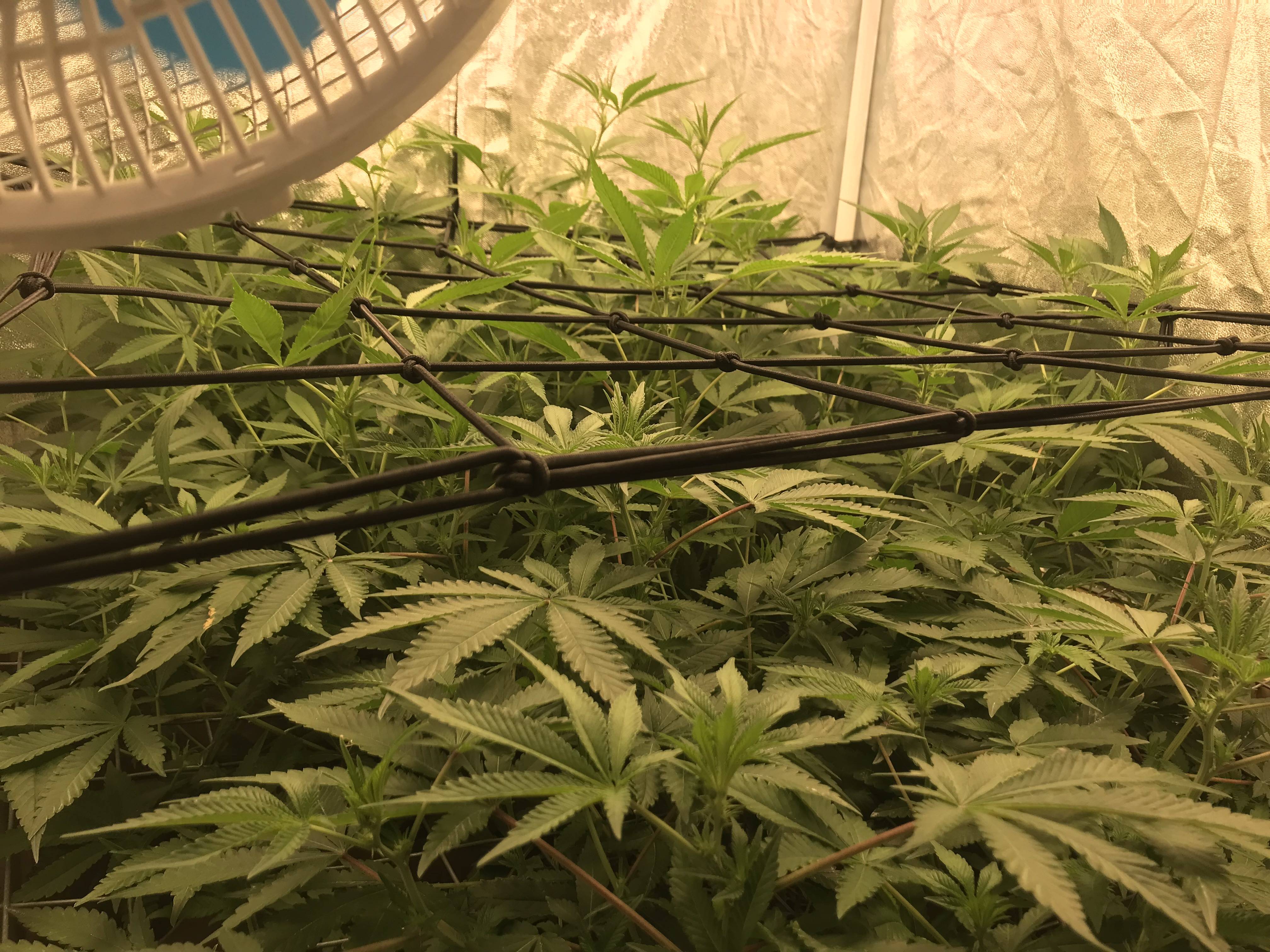-
Posts
1,310 -
Joined
-
Last visited
-
Days Won
68
Content Type
Profiles
Forums
Calendar
Gallery
Articles
420 Directory
Classifieds
Everything posted by ORGANinc.
-
Another very interesting short read about how science, biology and alchemy meet in a controversial mess. Biological transmutation is a dense data analysis read about how scientist Louis Kevran observed the transmutation of elements via biology. This is quite profound to say the least as what is being concluded in the book is the definition of alchemy. He basically says that using biology, all your macro nutrients can be derived from silica, and all micro nutrients can be derived from iron. If I understood correctly, it was not by means of fission that the atom structures where changed but by an almost unobservable vibration that disturbed the particles just enough to successfully rearrange the complete structure. Quantum headaches. Maybe some would find this equally as interesting.
-
Those are some roots man, how long has it been rooting?
-
This is quite a nugget. The amount of scientist who have done this study never seizes to amaze me... Just the dosage and frequency of application was the big ticket in many cases. First obviously nutritional integrity needed to be upheld in all plants. The ratios are all very similar it seems, Humic and fulvic for the intermediate chelation of all elements, and then kelp offering all the essential trace and some macro minerals, not forgetting all of the plant hormones. So many of cases found lower doses and higher frequencies worked best, but i'm in 2 minds about this, and quite intrigued at the fortnightly example you gave. Definitely worth trying. I feel like there is something to it.
-
What dose do you find to be the best with the silica?
-
I'm a bit weary of spraying teas, obviously the fresher the tea the safer I would imagine, and less room for pathogens to invade the leaf surface. But yes to some degree you want a thriving phyllosphere in order to create a healthy competitive environment on the leaf surface, that way pests and pathogens cant take hold as easy. Plant health plays a big factor here though, the symbiotic microbes can quickly become pathogens in these cases.
-
These sprayers are the business. I like the 1 with the wand for those hard to reach areas, even if doing a drench and you have the patience. I dont, but havn't had much of a choice with the limited space.
-
Foliars I’m sure are a method we all use to achieves certain goals. So I want to know or ask the community, what does your foliar schedule look like? How often does one go about foliar, either IPM or biostimulants, microbials, the whole host of foliar products available. You can spray just about anything. The intention either to be productive or to mend an imbalance, I think It is really effective and science has said so many times. I heard EPSOM SALTS a couple times this week. And I don’t doubt that one single bit. I’m tempted to try my hand lol. However my soil is buffered, quite a bit I suspect. Also, do you measure the ppm if using mild nutrient? Or just try make sure it’s teeny tiny? Then spray bottles! I’m sure everyone has a bottle that just stands out from the rest? I think the finer the mist the better I personally use what ever I need to, but it slowed down for the most part. - Ive been using bavueria bassiana, however you say it. Seems to work well. Although I haven’t used it again since 2nd application. - I sprayed thricoderma either before or after no Ill effect. - I used aloe powder, didn’t notice any reaction from plants - I sprayed an alfalfa tea that was specifically for foliar, I think Elaine Ingham designed it. But ya it’s nutrient dense for a spray. - I do spray a fulvic extract. But Im not too certain about the quality of fulvic. But plants love it. any body using kelpak as foliar? Or have tried?
-
Bud it looks as though your calcium is getting locked out, that might be because the soil is hot, and if something else is added, the existing calcium with bind too it or something to that extent and nutrients does not move as well. I would suggest just feeding water till they straighten out. No need to add anything else if that's fresh soil.
-
Its still one good looking plant man! That's a NOICE green
-
It wont be information that would benefit anybody in particular but the farm themselves, a qualified agronomist would have prescribed such a foliar dependent on most probably a sap analysis, i'm sure they would be quite certain that specific crop is deficient in Chlorine. Which would not surprise me, people spray all kinds of shit on their plants given the first inkling that it will do something fantastic. Nobodies scenarios are even slightly similar. There is so much variation. Anyway, if the conversation is about water plants with tap water because you need chlorine from a thumb suck. Ill pass, i'm sure your plants will be happy regardless. We just home growers at the end of the day.
-
Ya I just don’t want to hinder the process in anyway. But many cases I suspect it really doesn’t matter. There is much lower hanging fruit.
-
That soil definitely grafts well hey. Your seedling are always racing out the gates
-
Looks to be sulphur, Maybe a healthy dose of Epsom salts.
-
Okay Ill start here, So bro science or nonsense is commonly what you would hear coming from easyweedgrowing sites, Ilovegrowingmarijuana, softsecrets. maybe I'm not giving them enough credit because its not all nonsense, however, it does all tie back to one common denominator. And this is salt fertilizers. Above you will see a link to information about chlorine not being a problem and actually is an essential element, all of this is not incorrect. But I see all the inputs @Twix Aphen uses and cant help but wonder, why are you appropriating a chemical salt mentality with a living system. ''Cropnutrition'' do not sell microbial products, they sell salt fertilizers, salt fertilizers go hand in hand with tap water. Lets talk a little about what may seem to be common sense, the use of Chlorine/Flouride/Chloride in our tap water is put there for one purpose, and that is to make sure that our water is not contaminated or infested with bacteria, so in essence, these ingredients are making the water uninhabitable for microbes, but like all microbes they are quite resilient and end up coming back. I have attached the 2020 City of Capetown water analysis report, can't find the most recent one but this is good enough. Storing potable water calls for water treatment of maintaining 1-2ppm of chlorine to effectively kill bacteria and or any pathogens that may find your water. This number falls quite comfortably between the values in my area listed in the attachment. These systems also call for ''letting the water sit for 12-24 hours'' if values are are too high for use between 5-10ppm. (this sounds familiar) Then finally, i've spent the last couple of months reading along the lines of Gary zimmer, John kempf, Michael Astera, Phill Callahan, Arden Anderson, and couple of others that will outright say forget city water, if nothing else can be done, let the water sit for 12-24 hours and get it tested for carbonates. (again) Allowing your water to sit for as long as possible does not rid the water completely of chlorine, but it does get the levels to a range that it is not effecting your microbes as much as it would if it were higher, making your system more productive. There's a real problem when everything can just be labelled bro science. WaterQualityAnalysisReport_July2019-June2020_English (1).pdf
-
Yes that’s correct,
-
Both long carrot, I thought it would be better that way. Because there 3 plants and not just 1 in the middle. But I haven't a clue how effective either way it is. So I must experiment
-
And we start to dig in now.
-
Ya same, canopy control on point and I didn't have to do a thing. I think i'm doing zero training or topping, but might be too early to say.
-
Is this the tallest one?
-

Dirty Hands Elemental Blend
ORGANinc. replied to Marzcanna's topic in Organic Growing - Growing in soil
Never used it but heard it’s great. -

Dirty Hands Elemental Blend
ORGANinc. replied to Marzcanna's topic in Organic Growing - Growing in soil
I’m eager to kick up the brewer again and bubble some barley curry just gotta make sure its hot, not hot hot but ya I am using biodyne, and a have used a few microbes inoculation products, they say the mycorrhiza is the best ROI in agri feed programs. Biodyne works okay, better outside in the garden than in a amended mix I suspect. But can’t say for certain. -
Usually adding more and more microbes doesn’t give better results
-
Too many variables to know if it would be a benefit or not.






